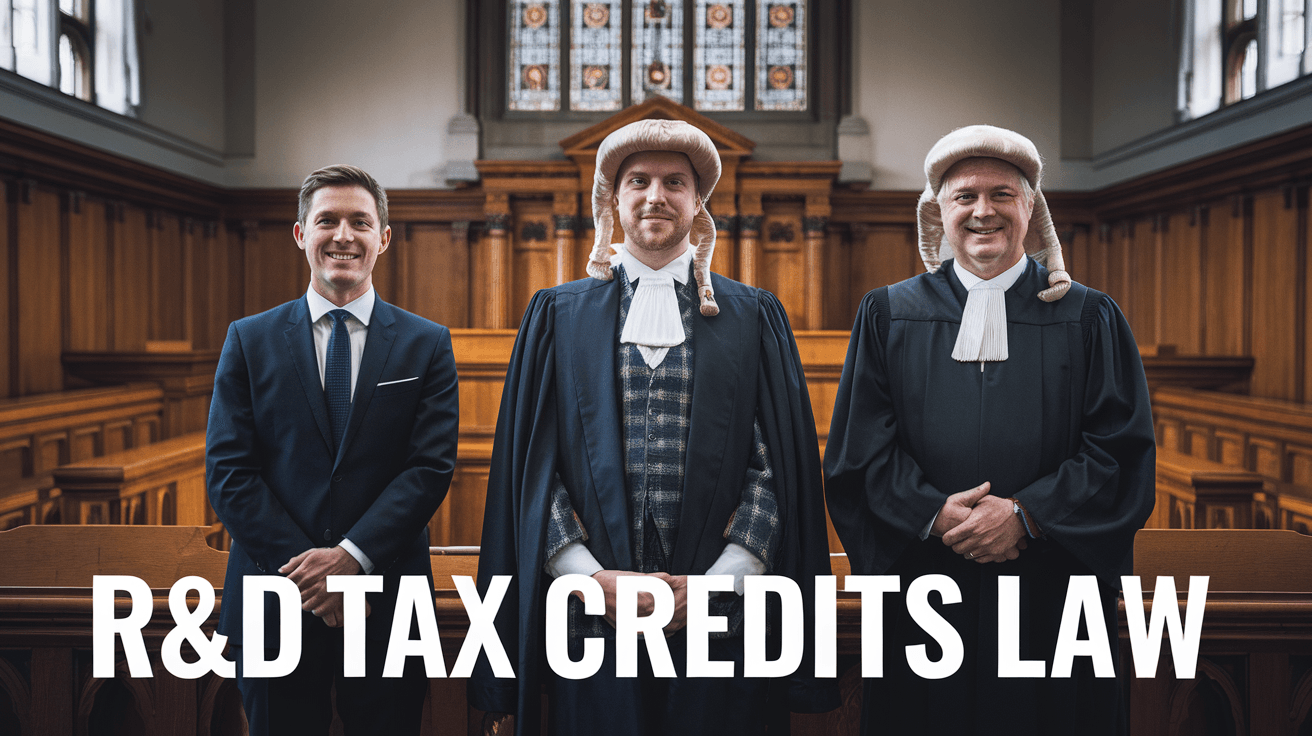R&D Tax Credits Wallasey Merseyside
R&D Tax Credits in Wallasey Merseyside are a government incentive designed to support businesses that invest in research and development, reducing tax liability or providing a cash refund. By claiming these credits, you can offset the costs of R&D and reinvest in further innovation, fostering growth and competitiveness.
To qualify, your business must be registered in the UK, incur costs on qualifying R&D activities, and seek to resolve scientific or technological uncertainties. This financial support is particularly beneficial for small and medium-sized enterprises (SMEs) in Wallasey Merseyside, helping them advance in their respective fields.
R&D Tax Credit Specialists can help you navigate the application process, ensuring you maximise your claim and comply with HMRC regulations. Their expertise ensures you capture all eligible expenses, avoiding common pitfalls and making the most of the financial benefits available.

How Do R&D Tax Credits Benefit Wallasey Businesses?
R&D tax credits provide Wallasey businesses with a significant financial incentive for investing in research and development. This support can boost your company's innovation efforts and enhance your market position.
Financial Advantages
R&D tax credits can significantly reduce your corporation tax burden. This financial relief allows you to reinvest more funds into your research and development activities, accelerating growth and improving profitability.
Competitive Edge in Innovation
By leveraging R&D tax credits, your business can stay ahead of the competition. The additional funds can be used to develop cutting-edge products and services, fostering a culture of innovation and ensuring you remain a leader in your industry.

Which Industries Commonly Claim R&D Tax Credits?
The technology sector, manufacturing, life sciences, and other innovative industries frequently claim R&D tax credits. These incentives are designed to support and encourage innovation, development, and advancement within these sectors.
Technology Sector
The technology sector is a leading claimant of R&D tax credits. Companies in this industry invest heavily in software development, artificial intelligence, and digital innovation. The credits help offset the costs associated with these advanced projects and foster ongoing technological advancements.
Manufacturing
Manufacturing is another significant beneficiary of R&D tax credits. Firms often engage in research to improve production processes, develop new materials, and enhance product design. These efforts can lead to more efficient and sustainable manufacturing methods.
Life Sciences
Life sciences companies also commonly claim R&D tax credits. Research in biotechnology, pharmaceuticals, and medical devices is crucial for advancing healthcare solutions. The credits support the high costs of clinical trials and development of new treatments.
Others
Other industries, including renewable energy, automotive, and construction, also take advantage of R&D tax credits. These sectors invest in innovative solutions to meet environmental standards, improve safety, and enhance overall performance.

What Qualifies as R&D Under UK Tax Law?
R&D (Research and Development) under UK tax law includes specific types of activities aimed at advancing knowledge or capability in a field of science or technology. The primary focus is on resolving scientific or technological uncertainties.
Qualifying Activities
Activities that qualify for R&D tax relief include experimental development, analysis, prototype testing, and software development, provided they are aimed at overcoming scientific or technological uncertainties. For example, developing new materials, improving manufacturing processes, or creating innovative software can all be considered qualifying activities.
Excluded Activities
Activities that do not qualify for R&D tax relief include market research, quality control, and routine data collection. Additionally, activities that are part of standard operational procedures, such as routine software updates or basic coding tasks, are excluded.

How Are R&D Tax Credits Calculated?
R&D tax credits are calculated based on your company's eligible research and development expenditure. The UK government offers these incentives to encourage innovation and technological advancement.
SME Scheme
If your company qualifies as a small or medium-sized enterprise (SME), you can claim up to 33.35% of your qualifying R&D expenditure as a tax credit. This scheme is designed to support smaller companies by providing a significant financial incentive for innovation.
RDEC Scheme
For larger companies, the Research and Development Expenditure Credit (RDEC) scheme applies. Under this scheme, you can claim 13% of your qualifying R&D expenditure as a payable tax credit. This helps larger organisations offset the costs of research and development.

Recent Changes to UK R&D Tax Credits
The UK Government has introduced significant updates to R&D tax credits, aimed at supporting innovation and fostering growth in the business sector. These changes are designed to make it easier for companies to claim and benefit from tax relief on R&D activities.
Policy Updates
- Increased Relief Rate: The relief rate for SMEs (Small and Medium-sized Enterprises) has been increased from 130% to 140%, meaning you can claim a larger percentage of your R&D costs.
- Simplified Eligibility Criteria: The criteria for eligible R&D activities have been revised to be more straightforward, reducing administrative burdens and making it easier to determine if your activities qualify.
These updates are intended to provide a clearer and more accessible pathway for businesses to benefit from R&D tax credits, ultimately driving innovation and economic growth.
Impact on Businesses
The revised R&D tax credits policy is expected to have a positive impact on businesses of all sizes, particularly SMEs. By increasing the relief rate and simplifying the eligibility criteria, the government is making it more attractive for you to invest in research and development. This could lead to increased innovation, better products, and ultimately, stronger market competitiveness.

How Can Wallasey Businesses Apply for R&D Tax Credits?
Wallasey businesses can apply for R&D tax credits by following a straightforward process designed to support innovation and development. The UK Government offers these credits to help businesses offset the costs of research and development, making it financially viable to invest in new technologies and products.
Application Process
- Determine Eligibility: First, ensure your business meets the criteria for R&D tax credits. The HMRC defines eligible activities as those that seek to achieve an advance in science or technology through the resolution of scientific or technological uncertainty.
- Gather Information: Collect all necessary documentation and data related to your R&D activities. This includes project descriptions, costs incurred, and any relevant technical details.
- Consult a Specialist: Consider consulting with an R&D tax credit specialist to help navigate the application process and maximise your claim.
- Submit Your Claim: Complete and submit the R&D tax credit claim form, either online or by post, to the HMRC. Make sure to provide all required information and documentation to avoid delays.
Required Documentation
To support your application, you will need to provide the following documents:
- A detailed project description outlining the R&D activities and their objectives.
- A breakdown of costs incurred, including staff salaries, materials, and subcontractor fees.
- Any technical reports or other evidence that demonstrates the scientific or technological uncertainty you aimed to resolve.
- Proof of company registration and financial statements for the relevant tax period.
By following these steps and providing the necessary documentation, you can successfully apply for R&D tax credits and benefit from financial support for your innovative projects.

What Common Mistakes Should Be Avoided When Claiming R&D Tax Credits?
To avoid costly delays and rejections, it’s crucial to understand the common pitfalls when claiming R&D tax credits. Overclaiming, underclaiming, and documentation errors are the main areas you should focus on to ensure a smooth and successful claim.
Overclaiming
Overclaiming can result in an audit and penalties, so it’s important to be realistic about your R&D activities. Only include costs that are directly related to your innovative projects and can be clearly justified.
Underclaiming
Underclaiming can mean leaving money on the table. Ensure you capture all eligible R&D expenses, such as staff wages, materials, and subcontractor costs, to maximise your claim.
Documentation Errors
Accurate and thorough documentation is essential. Keep detailed records of your R&D activities, including project plans, meeting minutes, and financial records. This will support your claim and reduce the likelihood of disputes with HMRC.
By avoiding these common mistakes, you can increase the chances of a successful and hassle-free R&D tax credit claim.

How Can Professional Advice Enhance R&D Tax Credits Claims?
Professional advice can significantly boost the value of your R&D Tax Credits claims by ensuring you maximise eligible expenses and navigate complex regulations. By working with experts, you can avoid common pitfalls and ensure your claims are robust and compliant.
Role of Tax Credit Specialists
- Identify Eligible Projects: Specialists can help you identify projects that qualify for R&D tax credits, ensuring you don’t miss out on potential savings.
- Maximise Claimable Expenses: They can guide you through the intricate process of identifying and documenting all eligible expenses, increasing the overall value of your claim.
- Navigate Regulatory Changes: Staying up-to-date with regulatory changes is crucial. Specialists can provide ongoing support to ensure your claims remain compliant with the latest HMRC guidelines.
Benefits of Expert Guidance
Expert guidance from R&D Tax Credit Specialists can provide several key benefits. Firstly, it helps you avoid costly mistakes that could lead to claim rejections or penalties. Secondly, it ensures you capture all possible expenses, maximising the financial benefit for your business. This support is invaluable, especially for smaller businesses that may lack the internal resources to navigate the complexities of R&D tax credits.
In Conclusion
R&D Tax Credits in Wallasey Merseyside offer a valuable financial incentive for businesses investing in research and development. By claiming these credits, you can significantly reduce your corporation tax burden or receive a cash refund, which can be reinvested into further innovation.
These credits are particularly beneficial for small and medium-sized enterprises (SMEs), helping them stay competitive and advance their technological capabilities. The recent increases in relief rates and simplified eligibility criteria make it easier than ever for Wallasey businesses to benefit from this government support.
If you haven’t already, consider consulting with R&D Tax Credit Specialists to ensure you maximise your claim and avoid common pitfalls. Take the first step today by gathering your documentation and submitting your application to HMRC. Don’t miss out on this opportunity to fuel your business’s growth and innovation.

